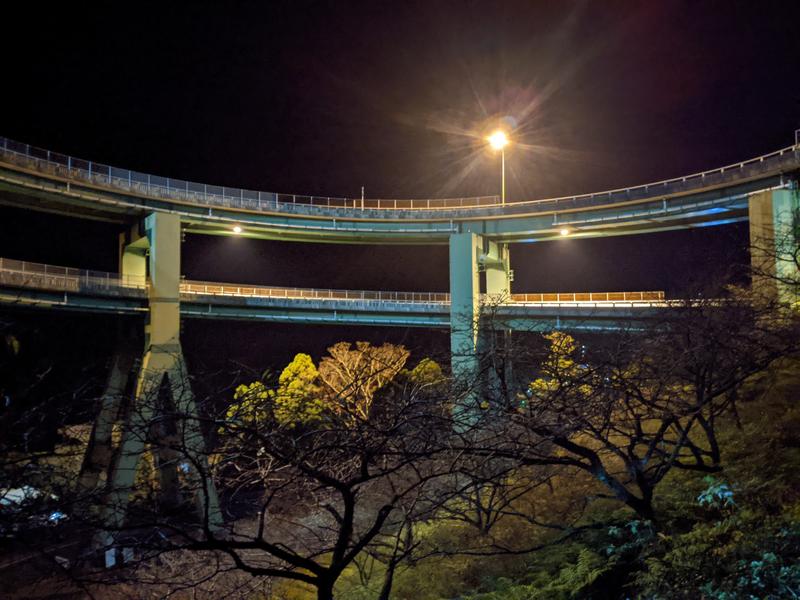One hundred consecutive months of at least one Century (i.e. a bike ride of 160.9+ km) a month complete! I started doing long distance bike rides in March 2012 and from September of that year started doing at least one Century per calendar month.
This latest ride in Izu covered 172.5 km (on Strava) and also added 24 VeloViewer tiles.

A ride in west Izu in December is almost like a personal tradition for me. As the weather turns drier in the winter there are so many nice Fuji views to be had and you can ride around the entire peninsula without climbing a single hill higher than 300 m.
Well, that’s the theory. But it actually rained for the first two hours and the return route through the center of the peninsula that I took to get back to Mishima had a climb to 650 m elevation and only 7 C in the dark. I had about 1,000 m of elevation gain on the way down to near Iwachi Onsen (south of Matsuzaki), but another 1,200 by replacing the hilly coastal road that I had come on with Rt15 and Amagi toge/Rt414 on the way back.

We met up at 8:00 at Mishima station. It had been raining on my drive on Tomei from Tokyo, but seemed to almost have stopped by the time we set off, so I left my rain gear in the small backpack I was wearing. The rain picked up again, bringing back memories of my rainy Fleche ride from Aizu to Tokyo in mid-October. Our first stop was at a 7-11 on the Izu north coast, before we headed out to the NW corner.

The Honshu coast was completely obscured by rain clouds, no views of Mt Fuji. However, gradually the sky brightened and the rain stopped. We bought some mikan from an unattended roadside stall (9 mikan for 300 yen) which we shared at a viewpoint overlooking Ida village.
First we could make out the side of the mountain, with snow visible at the top of the visible portion, just below the clouds. In Heda we visited the sandspit with the shrine. In clear weather you can view Mt Fuji behind the entrance to the local bay with the tori of the shrine in the woods on the sandspit from a small pier the locals use for fishing. The water there is crystal clear.

Then we climbed the biggest hill on the way to Toi, where we had Chinese lunch (because it was quick and December daylight is short). After that Jochem headed over the mountains to the center of the peninsula to catch a train back while Colin and I continued to Matsuzaki as fast as I could.
The rain had washed off all the chain lube and it was squeaking. I had to re-lube from my little container, which fixed it.

From Matsuzaki, Colin headed inland on Rt15 to get to Shimoda while I continued towards Iwachi onsen / Kumomi onsen. On a hill overlooking the Matsuzaki coast I took pictures when three Japanese road cyclists came up. We started to chat. In the end it turned out one lived in my neighbourhood (within half a km) and I had met with one of the others at a Half-Fast meeting a couple of years ago! The world is such a small place 🙂

Since I was running out of daylight, I headed back north and took the same route Colin had taken. From north of Shimoda I headed towards Amagi toge. My feet were wet the whole day from the rain, even though I had bought a simple pair of socks at a convenience store to change, because the shoes were still wet. My fleece trousers were also moist from not wearing the rain pants in the morning. So I wasn’t very comfortable, despite wearing the rain jacket as an extra layer. Dry feet are crucial for comfort and I resolved I will finally do something about keeping my shoes dry in the rain.
In one place the road passes a corkscrew-like ramp. The whole climb is very steady, mostly 5-7%, so not difficult but just long. It’s about as much climbing as Yabitsu pass, but less steep. The road is kind of remote, with no houses around and I could hear many deer whistling in the forest, but cars were passing quite regularly. North of the tunnel at the top of Amagi pass it was a loooong descent (more than 20 km of coasting). Once that leveled off I could follow the river and main roads back to Mishima, with no significant climbs.
I got back home around 01:00 in the morning, showered and went to bed. It felt good to have done the big ride for the month and extended the streak into the triple digits, which was my aim for the whole year.
Izu is always well worth a visit.
I don’t know how many more Centuries I’ll manage in December but I plan to continue in January 🙂

